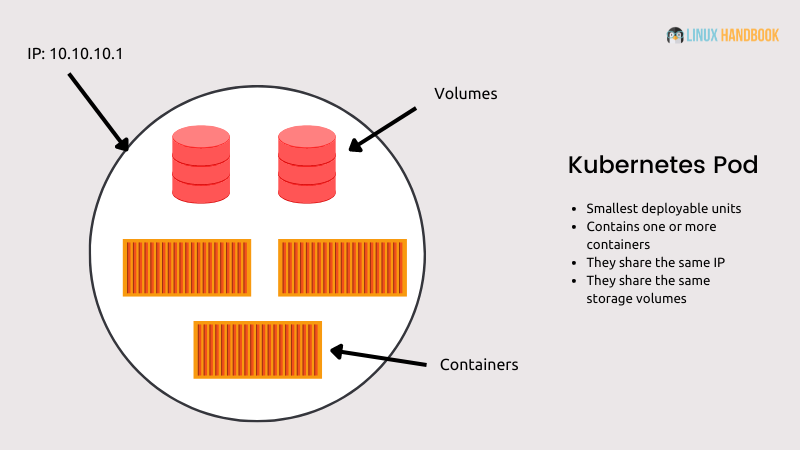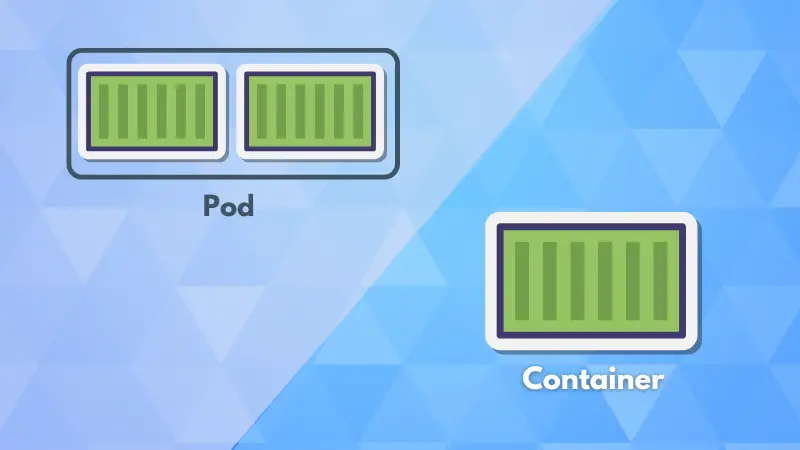
While working with Kubernetes, you will often come across two fundamental concepts: Pods and Containers.
While these terms are sometimes used interchangeably, they represent different entities with distinct roles in the Kubernetes ecosystem.
Understanding the difference between Pods and Containers is crucial for effectively managing and deploying applications in Kubernetes.

Let's explore the differences between Pods and Containers, with detailed explanations and practical examples to illustrate their relationship and functionality.
What are pods in Kubernetes?
Pods are the smallest deployable units in Kubernetes. A Pod represents a single instance of a running process in your cluster and can contain one or more tightly coupled containers that share the same network namespace and storage volumes.
Pods are ephemeral in nature, meaning they are designed to be created, destroyed, and recreated as needed. Pods serve as a wrapper around one or more containers, providing an additional layer of abstraction that allows Kubernetes to manage and orchestrate the containers efficiently.
Key Characteristics of Pods:
- Multiple Containers: A Pod can contain multiple containers that work together as a single cohesive unit. These containers share the same network IP address and can communicate with each other using localhost.
- Shared Storage: Containers in a Pod can share storage volumes, enabling data to be shared between containers.
- Lifecycle Management: Kubernetes manages the lifecycle of Pods, including creation, deletion, and scaling.
Understanding the Relationship Between Pods and Containers
A Pod is essentially a higher-level abstraction that encapsulates one or more containers. While a single-container Pod is the most common use case, there are scenarios where multiple containers are deployed within a single Pod.
In such cases, these containers are tightly coupled and share resources such as storage volumes and network interfaces.
Example 1: Single-Container Pod
Most applications deployed in Kubernetes consist of single-container Pods. In this case, the Pod acts as a wrapper around the container, providing Kubernetes with the ability to manage the container's lifecycle.
apiVersion: v1
kind: Pod
metadata:
name: single-container-pod
spec:
containers:
- name: nginx-container
image: nginx:latest
ports:
- containerPort: 80
In this example, the Pod single-container-pod contains a single container running the nginx web server.
Example 2: Multi-Container Pod
In some cases, you might want to deploy multiple containers that need to work closely together within a single Pod. For example, one container could serve as a web server, while another handles logging.
apiVersion: v1
kind: Pod
metadata:
name: multi-container-pod
spec:
containers:
- name: nginx-container
image: nginx:latest
ports:
- containerPort: 80
- name: logging-container
image: busybox:latest
command: ['sh', '-c', 'tail -f /var/log/nginx/access.log']
volumeMounts:
- name: log-volume
mountPath: /var/log/nginx
volumes:
- name: log-volume
emptyDir: {}
In this example, the multi-container-pod contains two containers: one running nginx and another running a busybox container for logging. Both containers share a volume, log-volume, where the nginx logs are stored.
Use Cases
Understanding when to use single-container Pods versus multi-container Pods is essential for efficient Kubernetes deployments.
Use Case 1: Single-Container Pod for Stateless Applications
For stateless applications, such as web servers or API endpoints, a single-container Pod is usually sufficient. This allows Kubernetes to manage the scaling and lifecycle of each instance of the application independently.
Use Case 2: Multi-Container Pod for Sidecar Patterns
A common use case for multi-container Pods is the Sidecar pattern. This involves deploying an additional container alongside the main application container to enhance or augment its functionality. Examples include logging agents, monitoring tools, or configuration managers.
Conclusion
In summary, while Containers are the fundamental units of application deployment, Pods provide the necessary abstraction for Kubernetes to manage these containers effectively.
A Pod can contain a single container or multiple containers that work together as a unit, sharing resources and coordinating their operations.

